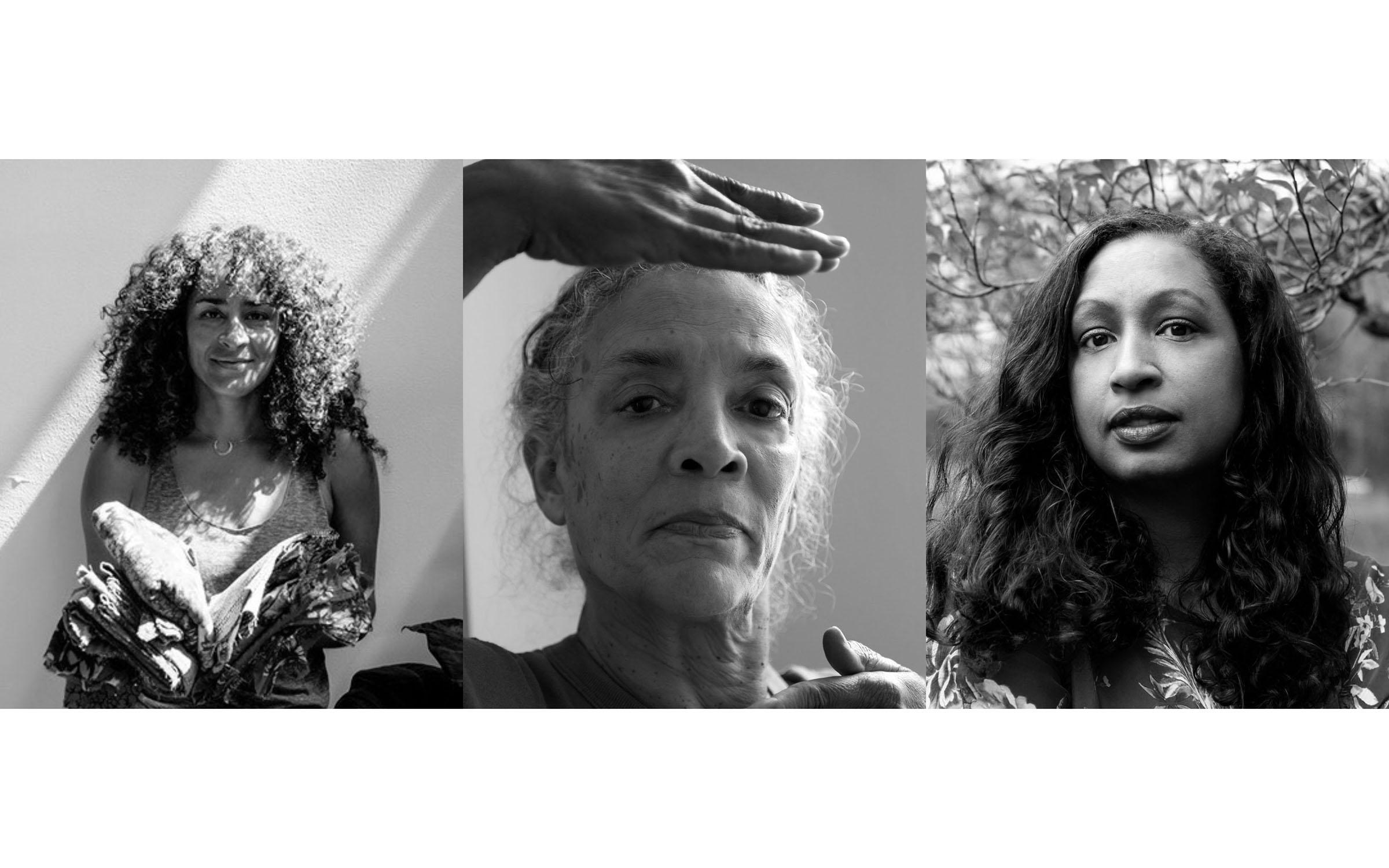
12–1 pm | FREE | Register now
The American Federation of Arts (AFA), in partnership with the Utah Museum of Fine Arts (UMFA), is pleased to invite you to a panel discussion with three artists featured in the AFA traveling exhibition, Black Refractions: Highlights from The Studio Museum in Harlem.
Artists Maren Hassinger, Adia Millett, and Shinique Smith embrace multifaceted approaches to making. Informed by the traditions of craft, dance, assemblage, public art, and more, they utilize innovative materials and processes to reflect on personal identify, shared experience, and the interconnectivity among living things.
This panel discussion will focus on how these artists harness the resonance of materials, the power of abstraction, and the spirit of experimentation to explore relationships between the natural and industrial worlds and between private narratives and collective histories.
Panelists:
Maren Hassinger | Artist
Adia Millett | Artist
Shinique Smith | Artist
Moderator:
Whitney Tassie | Senior Curator, Utah Museum of Fine Arts
About the Event
Please note this event will take place at 2:00pm Eastern Standard Time.
This is a live event via Zoom Webinar. You do NOT need a Zoom account in order to join the webinar.
A link to attend the webinar is included in your confirmation email. A reminder email with the attendee link will also be sent to you prior to the event.
About the Artists
Maren Hassinger lives and works in New York. She received her BA from Bennington College and her MFA in Fiber Structure from UCLA. She has exhibited widely in both the United States and abroad with a current solo exhibition, Nature, Sweet Nature, at the Aspen Art Museum and a public installation, Monument, in Washington, D.C. Her work is also on view in the exhibition, Knotted, Torn, Scattered: Sculpture after Abstract Expressionism, at the Guggenheim Museum. In April 2021, she will have a solo exhibition at Susan Inglett Gallery, NYC. Last year, Hassinger was commissioned to make an original work for Duro Olowu’s exhibition, Seeing Chicago, at MOCA Chicago. Her work was recently featured in the inaugural installation of the newly renovated MoMA, as a site-specific installation Monuments at Marcus Garvey Park in partnership with the Studio Museum in Harlem, and in solo presentations at the Boca Raton Museum of Art, the Baltimore Museum of Art, and the Spelman College Museum of Art. She is the recipient of many awards and honors including grants from the Louis Comfort Tiffany Foundation, and Pollock-Krasner Foundation. Her work can be found in the permanent collections of MoMA; the Guggenheim; the Whitney Museum; the Studio Museum in Harlem; the Art Institute of Chicago; and LACMA, among others.
Adia Millett, originally from Los Angeles, received a BFA from the UC Berkeley and an MFA from Cal Arts. Millett’s recent solo exhibitions include shows at The California African American Museum, The San Jose Quilt and Textile Museum, Traywick Contemporary and Galerie Du Monde in Hong Kong. She has been included in exhibitions at the Oakland Museum, The Museum of African Diaspora, PS1, The Studio Museum in Harlem, The Craft and Folk Museum in LA; The New Museum, The Museum of Contemporary Art in Atlanta; The Contemporary Art Center, New Orleans, the Contemporary Art Center of Virginia. Millett has taught at Columbia College in Chicago, UC Santa Cruz, Cooper Union in NY, and California College of the Arts. Millett currently lives and works in Oakland, California.
Shinique Smith is a Los Angeles based painter and sculptor known for her monumental abstractions of calligraphy textiles and collage. Smith’s personal histories and belongings intertwine with thoughts of the vast nature of ‘things’ that we consume and discard and how objects resonate on an intimate and social scale. Over the last twenty years, Smith has gleaned visual poetry from vintage clothing and explored concepts of ritual through tying, writing and gestures inspired by her travels and her early graffiti roots in Baltimore. Through her process, Smith builds a complex material vocabulary that deftly interweaves brushstrokes, private narratives and symbolism for the viewer to divine and intuit. Smith’s practice operates at the convergence of consumption, displacement and spiritual sanctuary, revealing connections across space, time, and place to suggest the possibility of constructing worlds renewed by hopeful delight.
